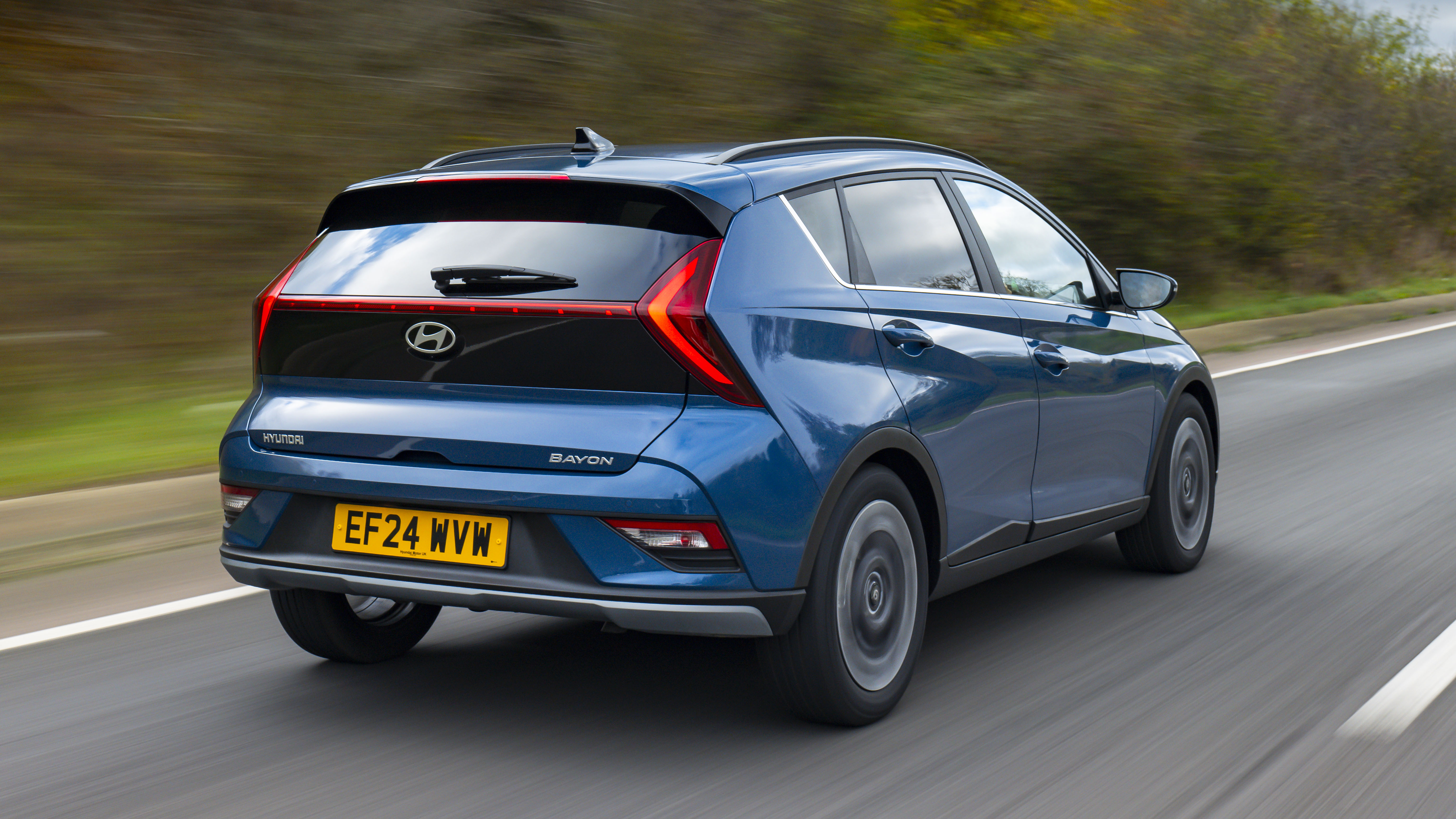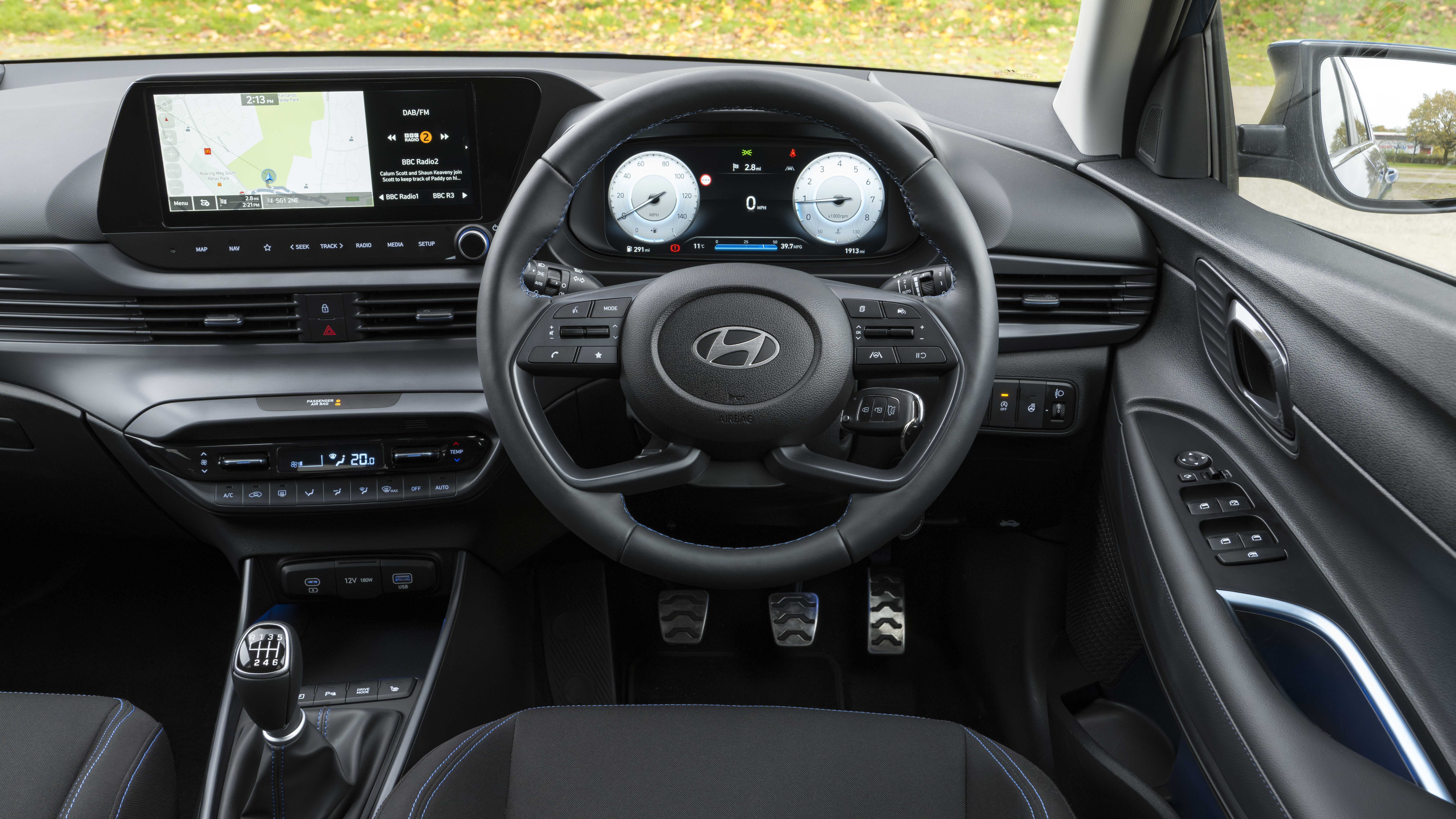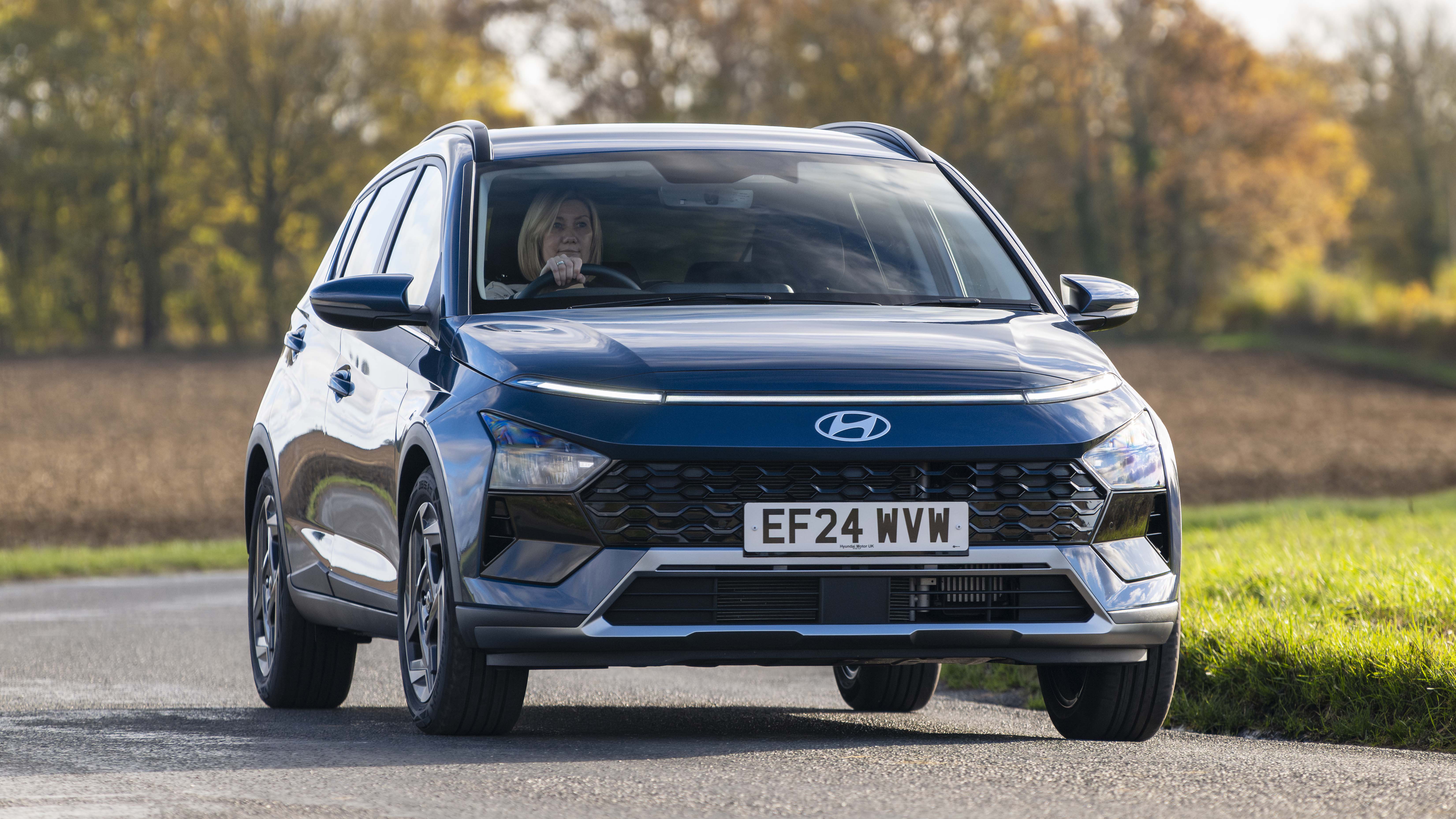
Interior
What is it like on the inside?
You won’t be shocked to hear that things look very familiar to Hyundai’s i20 supermini in here. Just a bit higher up. This is a cabin that majors on screens.
All versions get a crisp 10.25in digital instrument display which morphs its graphics if you explore Eco or Sport mode, as well as showcasing trip and fuel consumption data, driver assistance tech, and what media you’re bopping along to.
Plus, as part of the facelift, where entry versions previously got an 8in central display, all versions now get a matching 10.25in infotainment unit.
Is it any good?
It’s one of the simpler screens you’ll come across in this day and age, swift-reacting and smartly rendered. Directly beneath the screen there are a few shortcut touch controls, though a proper ‘Home’ button would have been useful.
Course, if you’ve got a smartphone you won’t be too bothered, as all versions can stream apps from your Apple or Android phone. Wireless phone mirroring is also available, so you needn’t have a cable messily trailing around the nether regions of the cabin. That said, sockets and stowage are plentiful – this is a device-friendly car.
And best news of all is Hyundai has seen fit to retain the dedicated climate control, complete with proper switchgear, which works just as well as you’d expect. Result. Wonder when that'll catch on?
What about space for humans, not phones?
Yep, plenty of that too: no surprise here, given the i20 is already one of the more spacious superminis you can buy. It’s up there with the Seat Ibiza for roominess, ahead of the likes of the Ford Fiesta and Renault Clio.
Being taller, the Bayon majors on headroom. You can sit a six-foot adult passenger in the back behind a six-foot-tall driver no trouble at all. The doors offer wide access, and you don’t get the sense the styling has been allowed to eat unduly into the windowline, so despite Hyundai’s best efforts to make it feel dreary and depressing inside with the grey-on-grey ambience, it’s actually fairly airy.
The boot is ample at 411 litres, with 1,205 litres to hand if you flip the seats down. That’s an improvement on its mild hybrid predecessor, which sacrificed some space for the battery and cabling stored back there.
Featured

Trending this week
- Car Review
BMW iX3






